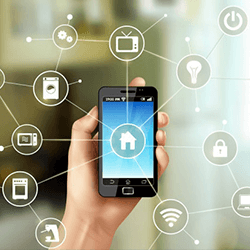What You’ll Need to Build Android Home Automation Hardware
Little by little, people are buying more smart devices for their homes. Devices like internet-enabled kettles and voice-controlled lights are changing the way people live in their homes. But as more smart devices enter the home, the harder they are to manage one by one. Creating your own Android home automation hardware will help you manage your smart devices and your home better.

Handling best home automation DIY projects can be overwhelming. Especially, without the right tools and knowledge in electrical engineering and computer programming. Below, we’ll run through the basic tools you’ll need to build your own basic home automation systems:
- Microcontroller board
- Bluetooth (BLE) board or Wi-Fi module
- "Message Queuing Telemetry Transport" (MQT)
- Smartphone
The first thing you will need to start building your own Android home automation hardware is an arduino or microcontroller board. This will be the central brain of your Android home automation hardware and is a vital part of the hardware. Without this, you won’t be able to build your home automation system. Arduino and Raspberry Pi are microcontrollers often used for projects with smart devices.
You can buy Microcontroller boards online or in your local electronics store. The size of your microcontroller will depend on certain factors. Like how many devices will connect to your Android Home Automation hardware. The more devices, the bigger you will need. Using and programming the microcontroller will need knowledge in programing and electronics engineering. But many tutorials and videos are available online for beginners.
Another thing you will need is a Bluetooth board or a Wi-Fi module. This will help your android home automation hardware connect to your smartphone and “talk” to your smart devices. The Wi-Fi module will form the bridge to connect your android home automation hardware to your smart devices.
Creating the network to connect all your devices to your hardware is tricky, and will need a lot of programming and IT knowledge to do right. You can also connect non-internet devices to the Android home automation hardware. But it will need more connections. And you will need background on electrical engineering to add non-internet devices to home automation systems.
You will also need an MQTT or “Message Queuing Telemetry Transport” protocol. This will help you operate your Wi-Fi-enabled devices using your Android Home Automation hardware. MQTT is a way for your devices to send data back to your home automation hardware and show you data it has acquired. Having an MQTT is important as it interprets data coming from your devices into a language that you can understand. And relay commands from your home automation system to your smart devices.
One of the most common examples of using MQTT is when an internet-enabled temperature control device collects data on room temperature. After the smart device scans for room temperature, it will send the data to your home automation systems. You must install an MQTT library in Android home automation hardware. So it can interpret the data sent to it. You can then connect to the hub with your smartphone through an app available in Google Play. The procedure will need programming knowledge and understanding of the MQTT protocol.
Lastly, you’ll need your smartphone to bring all these things together. Your smartphone will act as the remote control for all your smart devices connected to your Android home automation hardware. Through your smartphone, you can send commands to your smart devices over the internet even when you’re in the office.
You’ll need to access your MQTT server through an app provided by your MQTT broker so you can see the data coming in through your home automation hub. How detailed the information you’ll receive will depend on how advanced your home automation systems are.
Choosing WHICHHOMEAUTOMATION.COM
Doing your own home automation DIY project is not easy. And could be dangerous without the proper knowledge and skills. That’s why you should look for in-depth reviews about home automation systems done by experts so that you have a better understanding of how home automation works. You’ll also see what home automation devices available and which you can buy so you don’t need to make your own.
WHICHHOMEAUTOMATION.com provides information about different smart home devices and how they compare with each other. They also have a detailed F.A.Q section to help people transition to a smart home properly and safely.
Want to find the best Android home automation hardware for your home? Then visit www. whichhomeautomation.com today!